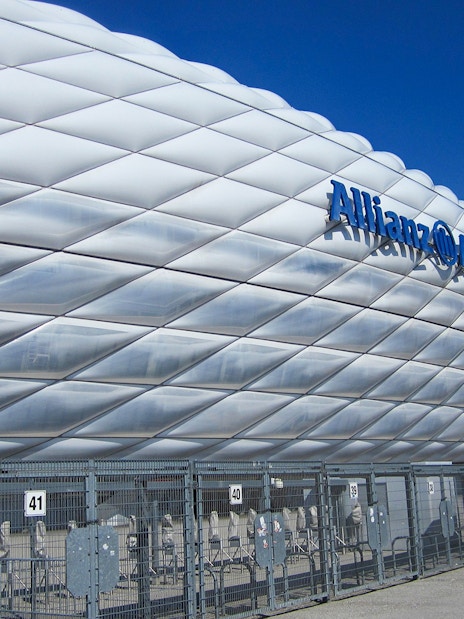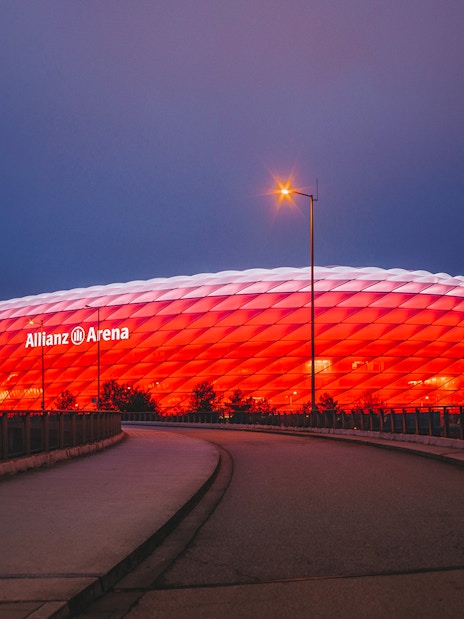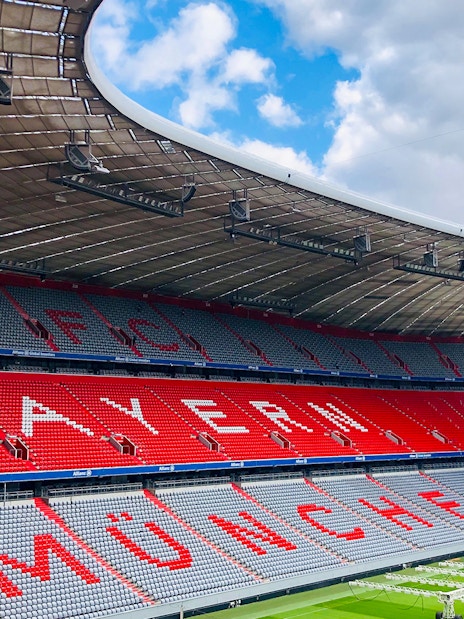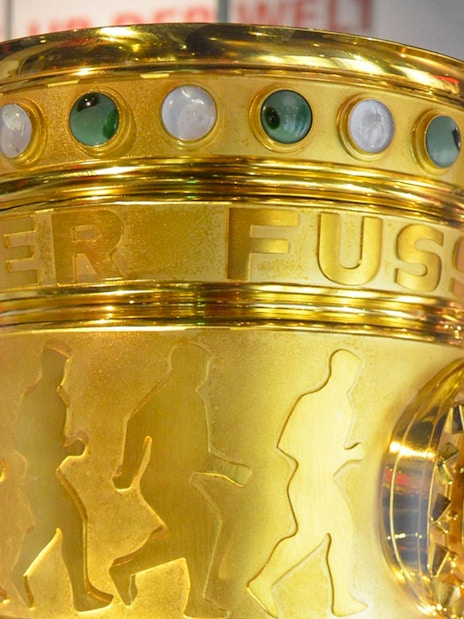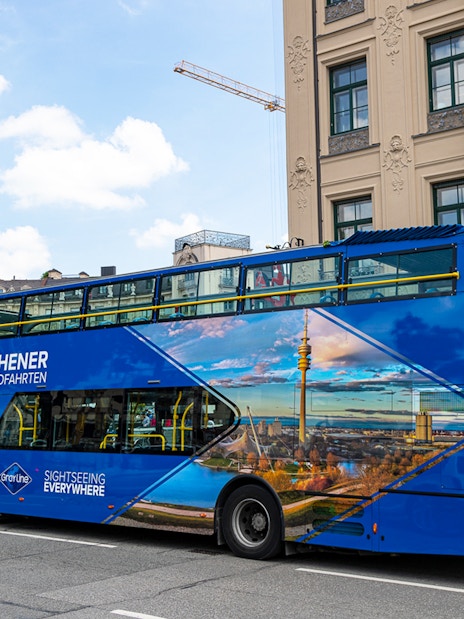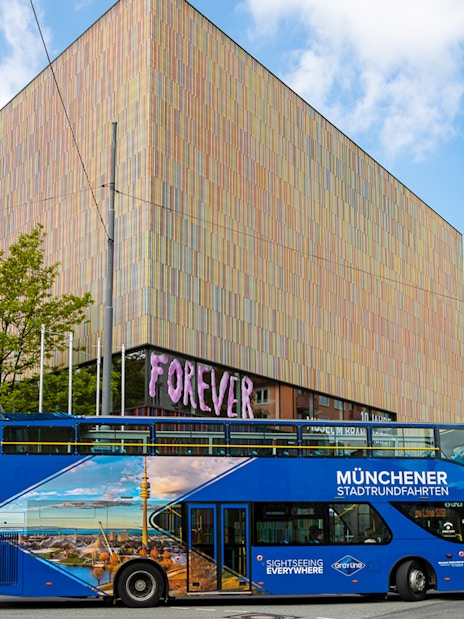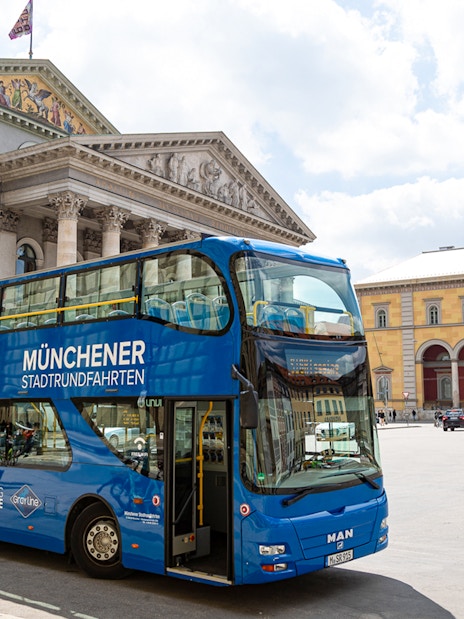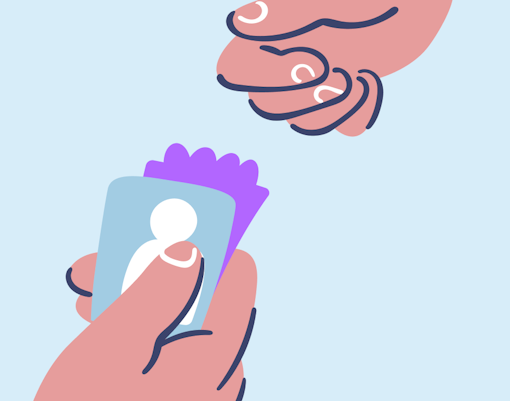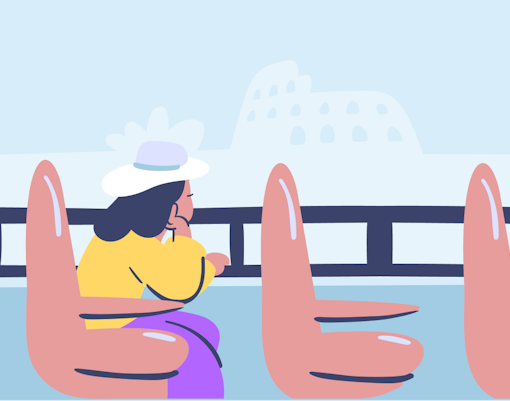The heart of Munich, home to the famous Glockenspiel and stunning Neues Rathaus (New Town Hall).
Munich Hop-On Hop-Off Tours
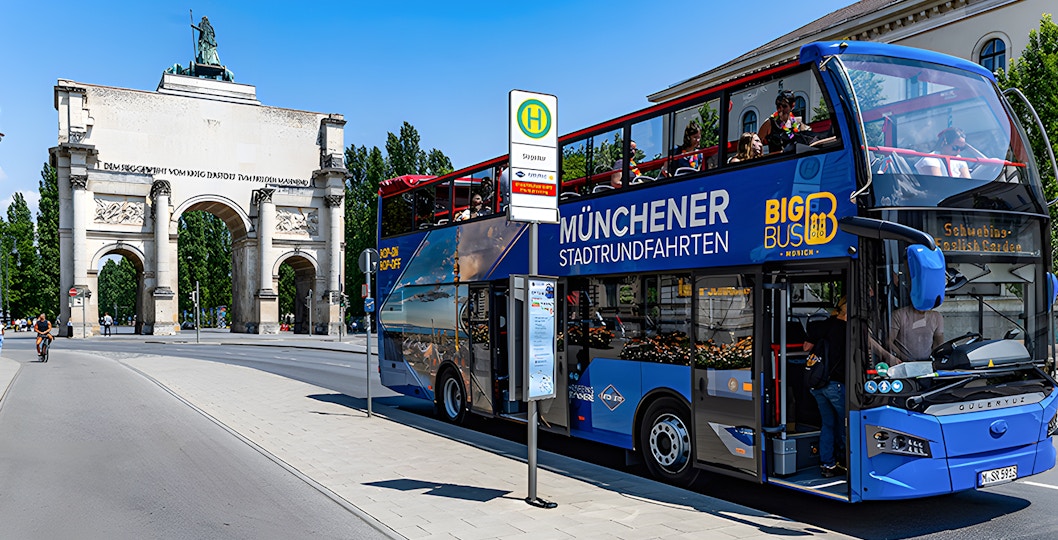
Routes
- Uncover Munich's key sights along 2 routes – perfect for short stays in the city.
- Munich's historic buildings and beer culture are yours to explore on a 24/48-hour bus tour with the freedom to hop on and off as you please.
- Board a bus once every 30 minutes at 11 convenient stops across two routes, getting dropped near Munich’s must-see landmarks in no time.
- Upgrade to the Orange line for a peek at Munich’s hidden gems, from the peaceful English Garden to the futuristic BMW World & Museum.
- Get comfortable on the open-top bus with a 9-language audio guide that brings Munich’s rich stories and quirky tales right to your ears.
- Zoom through Munich’s hotspots, from the classic Alte Pinakothek to the Englischer Garten's surfable rivers, soaking up all the local flavor.
- Uncover Munich's key sights along 2 routes – perfect for short stays in the city.
- Munich's historic buildings and beer culture are yours to explore on a 24/48-hour bus tour with the freedom to hop on and off as you please.
- Board a bus once every 30 minutes at 11 convenient stops across two routes, getting dropped near Munich’s must-see landmarks in no time.
- Upgrade to the Orange line for a peek at Munich’s hidden gems, from the peaceful English Garden to the futuristic BMW World & Museum.
- Get comfortable on the open-top bus with a 9-language audio guide that brings Munich’s rich stories and quirky tales right to your ears.
- Zoom through Munich’s hotspots, from the classic Alte Pinakothek to the Englischer Garten's surfable rivers, soaking up all the local flavor.
Inclusions
- 24/48-hour unlimited hop-on hop-off bus tour
- Access to Green line
- Access to Orange line (based on option selected)
- Audio guide in English, German, French, Spanish, Portuguese, Italian, Russian, Chinese & Japanese
- Free earphones
Please click here for the detailed route map and boarding points.
You can join the tour at any stop and hop on and off for the duration of your ticket.
Green Line
- First bus: 10am from Karlsplatz / Stachus
- Last bus: 4:30pm from Karlsplatz / Stachus
- Frequency: Approx. every 30 mins
- Popular stops: Odeonsplatz, English Garden & Deutsches Museum
Orange Line
- First bus: 10am from Karlsplatz / Stachus
- Last bus: 4pm from Karlsplatz / Stachus
- Frequency: Approx. every 30 mins
- Popular stops: Nymphenburg Palace, Schwabing & Olympiapark
- The buses are wheelchair accessible.
- Your guide dogs and pets are welcome onboard the bus.
- You can cancel these tickets up to 24 hours before the experience begins and get a full refund.
Routes
- Cover more ground in Munich with 3 routes or take a single-loop tour for a quick city glimpse.
- Explore Munich with a 24/48-hour hop-on hop-off bus pass, soaking in medieval architecture, vibrant squares, and endless people-watching moments.
- With buses every 15-60 minutes on three routes, decide where and how often to hop on and off, taking full control of your Munich sightseeing trip.
- For a swift, all-in-one tour, choose the city bus tour, which rolls by Munich’s iconic spots like Odeonsplatz and Marienplatz without making any stops.
- Settle into an open-top double-decker, equipped with audio guides in 10 languages, letting Munich’s stories unfold in your favorite language.
- Visit the grand Nymphenburg Palace or Olympic Park’s striking grounds, where Munich’s royal history and Olympic legacy offer striking scenes and sights.
- Cover more ground in Munich with 3 routes or take a single-loop tour for a quick city glimpse.
- Explore Munich with a 24/48-hour hop-on hop-off bus pass, soaking in medieval architecture, vibrant squares, and endless people-watching moments.
- With buses every 15-60 minutes on three routes, decide where and how often to hop on and off, taking full control of your Munich sightseeing trip.
- For a swift, all-in-one tour, choose the city bus tour, which rolls by Munich’s iconic spots like Odeonsplatz and Marienplatz without making any stops.
- Settle into an open-top double-decker, equipped with audio guides in 10 languages, letting Munich’s stories unfold in your favorite language.
- Visit the grand Nymphenburg Palace or Olympic Park’s striking grounds, where Munich’s royal history and Olympic legacy offer striking scenes and sights.
Inclusions
- 24/48-hour unlimited hop-on hop-off bus tour
- Round-trip city bus tour (based on option selected)
- Access to Red route
- Access to Purple & Blue routes (based on option selected)
- Audio guide in German, English, French, Italian, Japanese, Norwegian, Russian & Spanish
Please click here for the detailed route map and boarding points.
You can join the tour at any stop and hop on and off for the duration of your ticket.
Red Line: City Tour
- First bus: 10am from Hauptbahnhof
- Last bus: 4:30pm Hauptbahnhof (5pm during Summers)
- Frequency: Every 15 to 30 mins
- Popular Stops: Old Town, Odeonsplatz & Marienplatz
Purple Line: Nymphenburg-Olympia Tour
- First bus: 10am from Hauptbahnhof
- Last bus: 4pm from Hauptbahnhof (5pm during Summers)
- Frequency: Every 30 mins
- Popular Stops: Nymphenburg Palace & Olympic Park
Blue Line: Schwabing Tour
- First bus: 10:30am from Hauptbahnhof
- Last bus: 4:30pm from Hauptbahnhof
- Frequency: Every 2 hours (every 1 hour during Summers)
- Popular Stops: Promenadeplatz, Museum Brandhorst & Benedictine Abbey of Saint Boniface
- The buses are wheelchair accessible.
- Your guide dogs and pets are welcome onboard the bus.
- On Dec 24, the city tours take place until 2pm, and on Jan 1, the city tours start at 12pm.
- You can cancel these tickets up to 24 hours before the experience begins and get a full refund.
- These tickets are valid for 12 months from the date of purchase.
- Dive into Munich’s remarkable soccer scene and discover the wonders of the city on a sightseeing bus tour, enjoying live commentary in German and English
- Immerse yourself in the captivating world of FC Bayern Munich at its museum, exploring the lives and belongings of the club's greatest players.
- Explore the architectural masterpiece of Allianz Arena, the 2006 FIFA World Cup venue, on an exclusive behind-the-scenes tour, unveiling its cutting-edge facilities.
- Visit the training grounds of FC Bayern and get behind-the-scenes access to dressing rooms, player tunnel, press, and VIP areas.
- Behold the gleaming trophies, titles, and immersive displays that showcase FC Bayern's unparalleled success.
- Dive into Munich’s remarkable soccer scene and discover the wonders of the city on a sightseeing bus tour, enjoying live commentary in German and English
- Immerse yourself in the captivating world of FC Bayern Munich at its museum, exploring the lives and belongings of the club's greatest players.
- Explore the architectural masterpiece of Allianz Arena, the 2006 FIFA World Cup venue, on an exclusive behind-the-scenes tour, unveiling its cutting-edge facilities.
- Visit the training grounds of FC Bayern and get behind-the-scenes access to dressing rooms, player tunnel, press, and VIP areas.
- Behold the gleaming trophies, titles, and immersive displays that showcase FC Bayern's unparalleled success.
Inclusions
- Sightseeing bus tour of Munich
- German/English speaking guide on board
- Allianz Arena guided tour with press and changing rooms
- Entry into FC Bayern Munich Museum
- Access to FC Bayern Fan Shop
- City tour by sightseeing doubledecker bus with live commentary in English or German
- Guided tour of Allianz Arena
- Free time at FC Bayern Museum and Fan Shop
- Departure from Allianz Arena towards the city, passing by Olympiapark
- End of tour at the departure point
- Tip: Before leaving, browse the Allianz Arena Shop for souvenirs and official merchandise.
- Click here to view the landmarks you’ll encounter during your Munich city bus tour.
- Please note: On match days, there will be no visit to the Allianz Arena so the tour would need to be canceled. This information often will be on shorthand notice.
- You can cancel these tickets up to 24 hours before the experience begins and get a full refund.
- Simplify your Munich trip with a Munich City Pass that gets you into 45+ attractions, covers public transport, and includes hop-on hop-off tours.
- Save up to 50% on tickets for places like the Bavarian National Museum, State Museum of Egyptian Art, Umadum Ferris Wheel, and more.
- The pass also covers airport transfers and public transport (buses, trains, metro, and trams) in the entire area.
- Choose 1-5 days of access and enjoy a 24-hour hop-on hop-off tour, guided tours and discounts at famous restaurants.
- Get your pass via email, use the city guide and map offering expert tips on how to traverse the city.
- Simplify your Munich trip with a Munich City Pass that gets you into 45+ attractions, covers public transport, and includes hop-on hop-off tours.
- Save up to 50% on tickets for places like the Bavarian National Museum, State Museum of Egyptian Art, Umadum Ferris Wheel, and more.
- The pass also covers airport transfers and public transport (buses, trains, metro, and trams) in the entire area.
- Choose 1-5 days of access and enjoy a 24-hour hop-on hop-off tour, guided tours and discounts at famous restaurants.
- Get your pass via email, use the city guide and map offering expert tips on how to traverse the city.
Inclusions
- Validity: 1/2/3/4/5 days
- Access to hop-on hop-off tours
- Access to unlimited public transport
- Museums: Bavarian National Museum, Jewish Museum, State Museum of Egyptian Art & more
- Attractions: FC Bayern Museum, Umadum Ferris Wheel, SEA LIFE Munich & more
- Guided Tours: City Hall German guided tour, Oldtown German guided tour, and Bicycle Tour through Munich in German and English
- Get complete details here
- Firstly, choose the city pass and the period of validity and receive your ticket via email. You can use the same pass for free entry and also reduced/discounted tickets.
- Choose between 1, 2, 3, 4 or 5 consecutive calendar days. It means that if you’ve booked a 1-day pass, then the pass is valid for 24 hours and you can use it till 6 am after the last valid day and so on.
- Your pass activates the instant you use it at the first attraction or tour and remains valid for the following days you've chosen.
- You can enter any attraction only once.
- You can cancel these tickets up to 24 hours before the experience begins and get a full refund.
Hop on, hop off, and see what fellow travelers are saying!
Why choose Munich Hop-on Hop-off bus tours
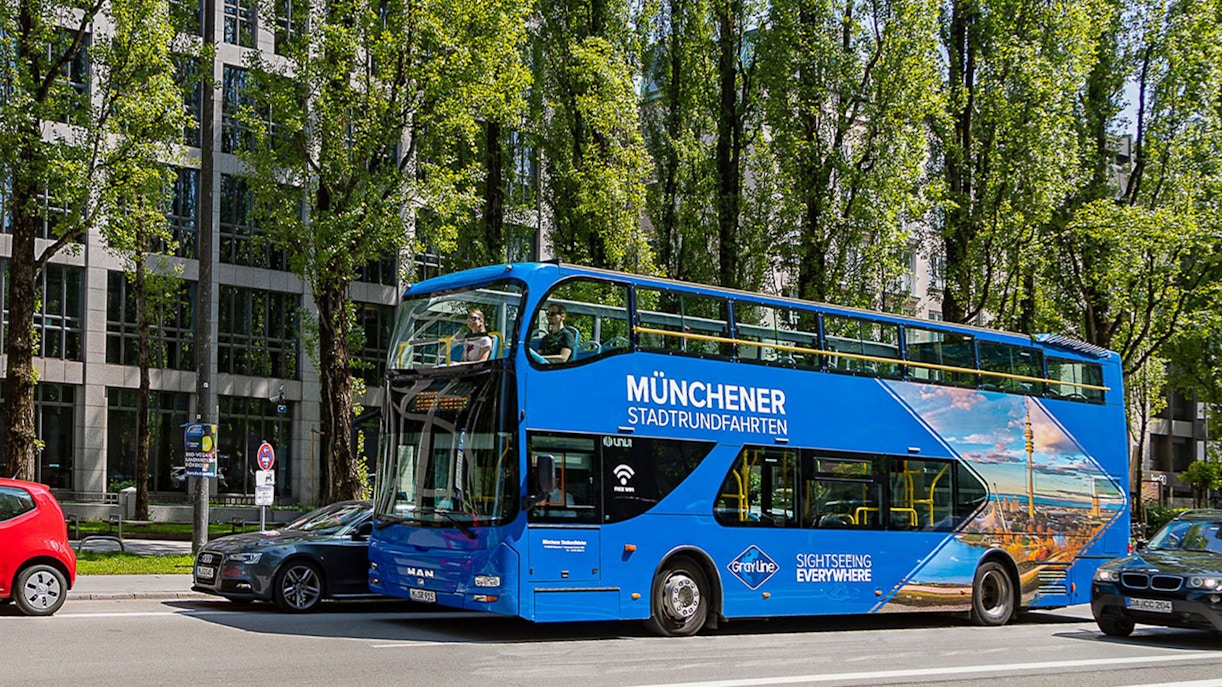
- City travel made simple: A hop-on hop-off bus tour eliminates all logistics hassles by offering a direct, convenient route covering all major attractions. With multiple well-planned stops, you can avoid the complexity of local transport systems or dealing with multiple transport tickets. Its cost-saving benefits include a one-time ticket purchase for unlimited travel, no extra transport fees, and optional combo tickets, making it a budget-friendly choice as well.
- Flexibility to explore: A hop-on hop-off tour lets you decide your own schedule. Hop off to explore an attraction in depth, hop back on when you're ready to move on, and choose between a 24-hour or 48-hour ticket to suit your travel plans.
- Multiple routes covering key attractions: Hop-on Hop-off buses cater to different interests by offering multiple routes covering various aspects of Munich. The City Route covers central attractions like Marienplatz, the Palace Route takes you to grand sites like Nymphenburg Palace, and the Panoramic Route covers the English Garden - all routes designed to maximize your sightseeing experience.
- Engaging multilingual audio guides: One of the biggest advantages of a hop-on hop-off tour is the included commentary, available in multiple languages. You get free access to insightful storytelling, historical facts, cultural insights, and fun trivia about Munich’s landmarks, history, and culture.
Hop-on Hop-off buses are the perfect choice for
How to book tickets
Top Munich landmarks on the Hop-on Hop-off tour
Marienplatz
Frequently Asked Questions about Munich Hop-on Hop-off bus tours
Most buses take about 60-80 minutes to complete a full, non-stop loop. They usually depart every 30 to 60 minutes, depending on the route.
Yes, the buses are wheelchair accessible.
Audio guides are mostly available in English, German, French, Spanish, Portuguese, Italian, Russian, Chinese, and Japanese.
Yes, opt for a Munich City Pass that allows you to save over 50% and provides access to 45+ attractions, covers public transport, and includes hop-on hop-off tours.
Yes, dogs are allowed on-board.

















